Introduction to Fanjingshan
Nestled in the misty heights of Guizhou Province, China, Fanjingshan (梵净山, Fànjìng Shān) stands as a breathtaking testament to both natural wonder and spiritual significance. This majestic mountain, recognized as a UNESCO World Heritage Site in 2018, captivates visitors with its unique geological formations and rich biodiversity.
Rising to 2,572 meters, Fanjingshan is the highest peak in the Wuling mountain range. Its name, meaning “Brahma’s Pure Land,” hints at its importance in Chinese Buddhism as one of the sacred mountains of the religion.
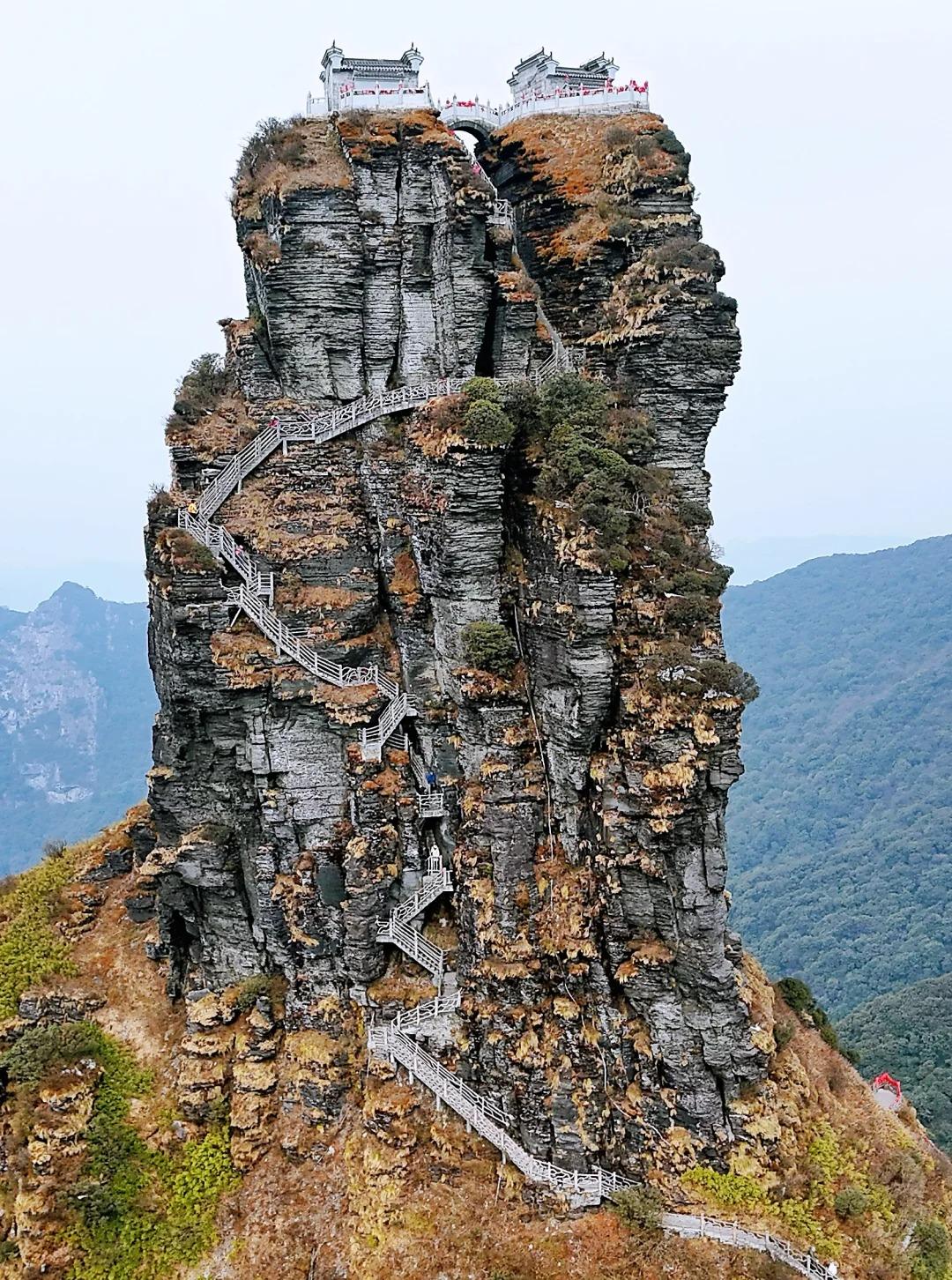
Unique Geological Features
Fanjingshan’s distinctive peaks are a result of millions of years of tectonic activity and erosion. The mountain’s most iconic features include:
- Golden Lotus Peak: Two towering spires connected by a narrow bridge
- Mushroom Stone: An enormous boulder balanced precariously atop a narrow base
These quartzite sandstone formations, sculpted by time and weather, are estimated to be over 600 million years old, making Fanjingshan one of the oldest mountains in China.
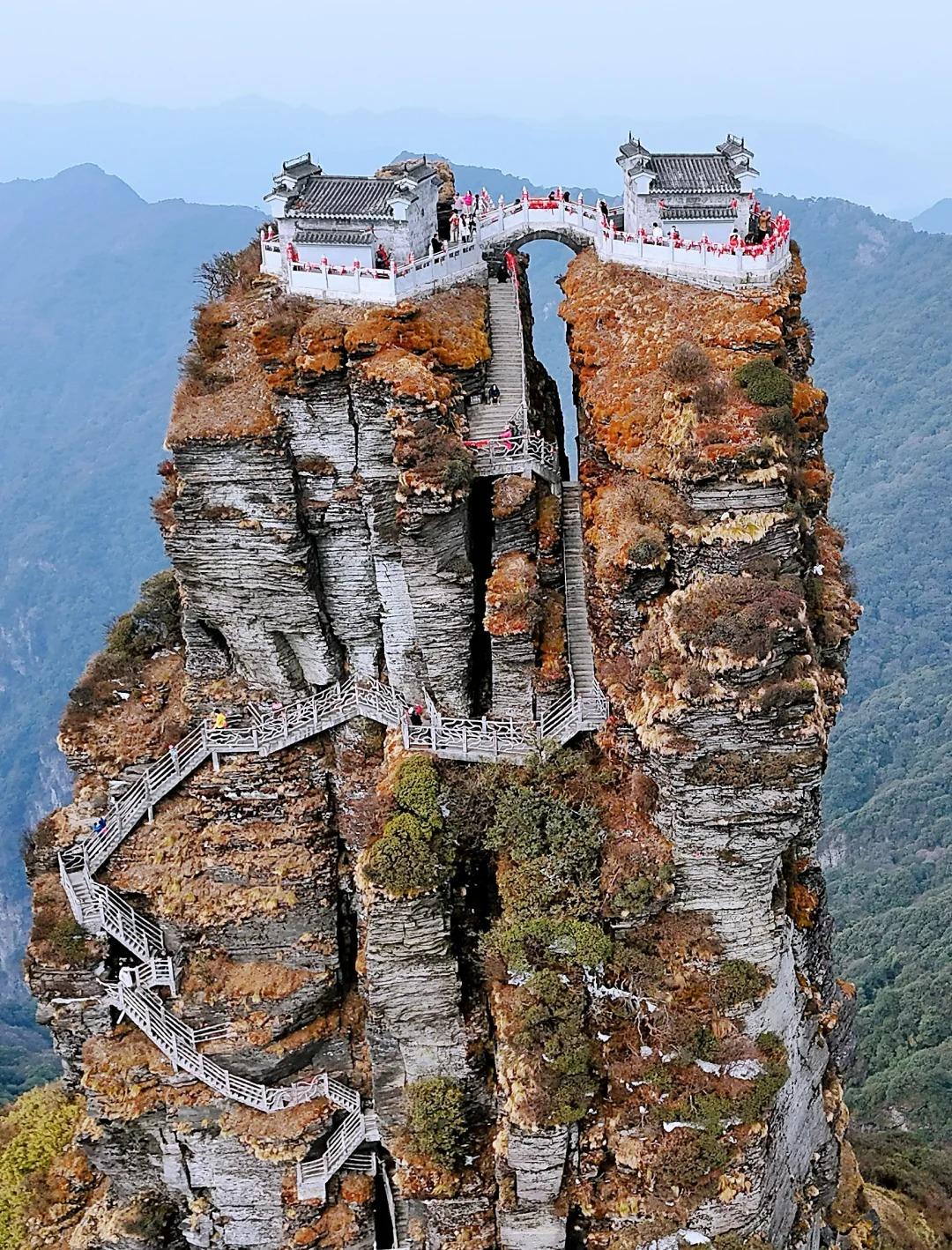
Biodiversity and Ecosystem
Fanjingshan is a biodiversity hotspot, home to numerous rare and endemic species:
- Over 2,000 plant species
- 31 endangered animal species
- Diverse array of birds, amphibians, and insects
The mountain is particularly notable as a habitat for the endangered Guizhou snub-nosed monkey, with only about 750 individuals remaining in the wild.
Climate and Its Impact
Fanjingshan’s climate is characterized by:
- High humidity
- Frequent mist and clouds
- Distinct vertical climate zones
This unique environment has created a series of microclimates, supporting a rich tapestry of life from subtropical forests at the base to alpine meadows near the summit.
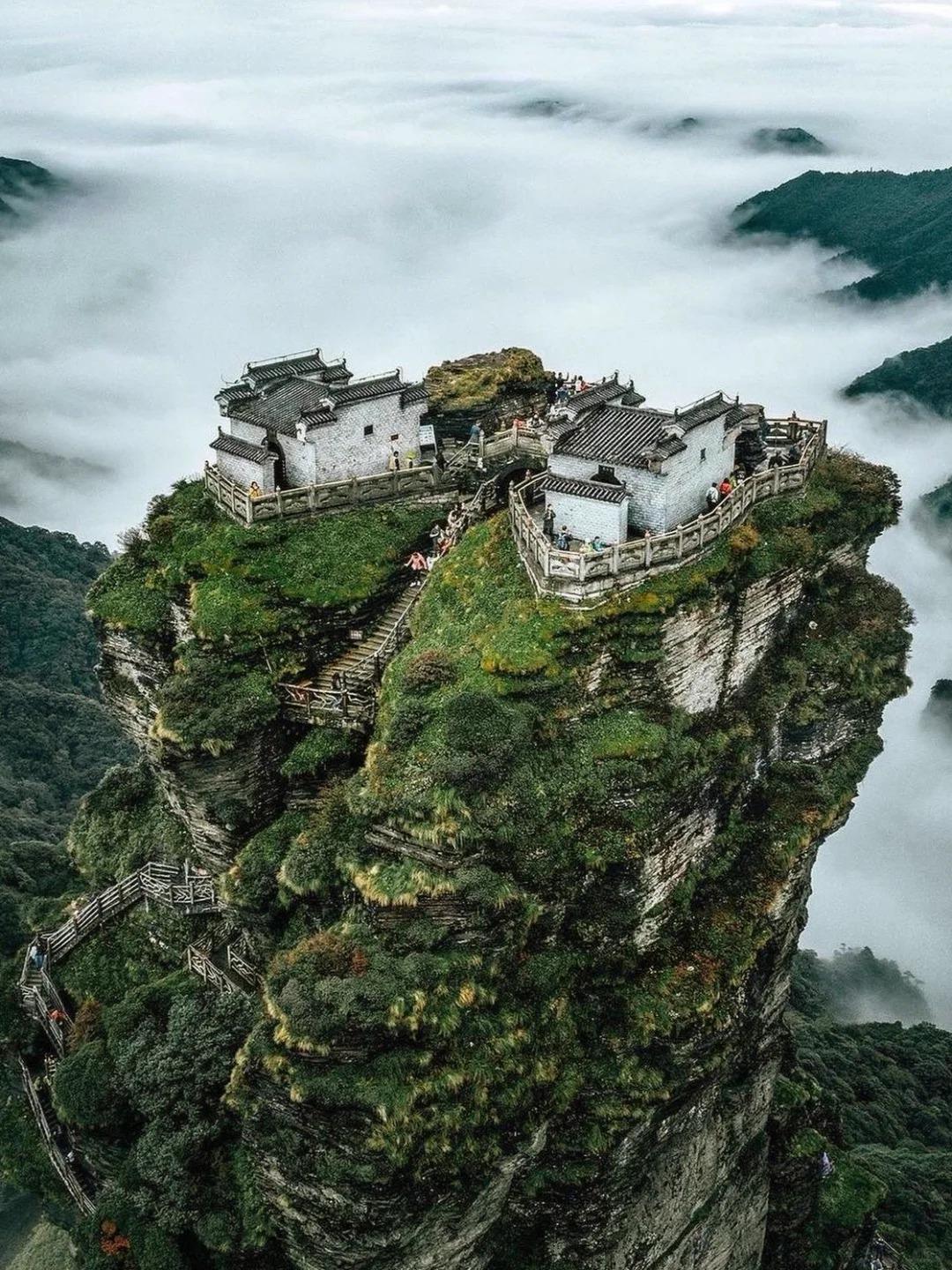
Buddhist Heritage and Cultural Significance
For over a millennium, Fanjingshan has been revered as a sacred site in Buddhism. It is believed to be the bodhimanda of Maitreya Buddha, the future Buddha of this world.
Notable Structures
- Old Golden Summit: Home to the Temples of the Buddha and Maitreya
- New Golden Summit: Features a small temple perched between two rock spires
- Chen’en Temple: An ancient Buddhist temple and important pilgrimage site
Legends speak of celestial beings and divine manifestations on the mountain, adding to its mystical allure.
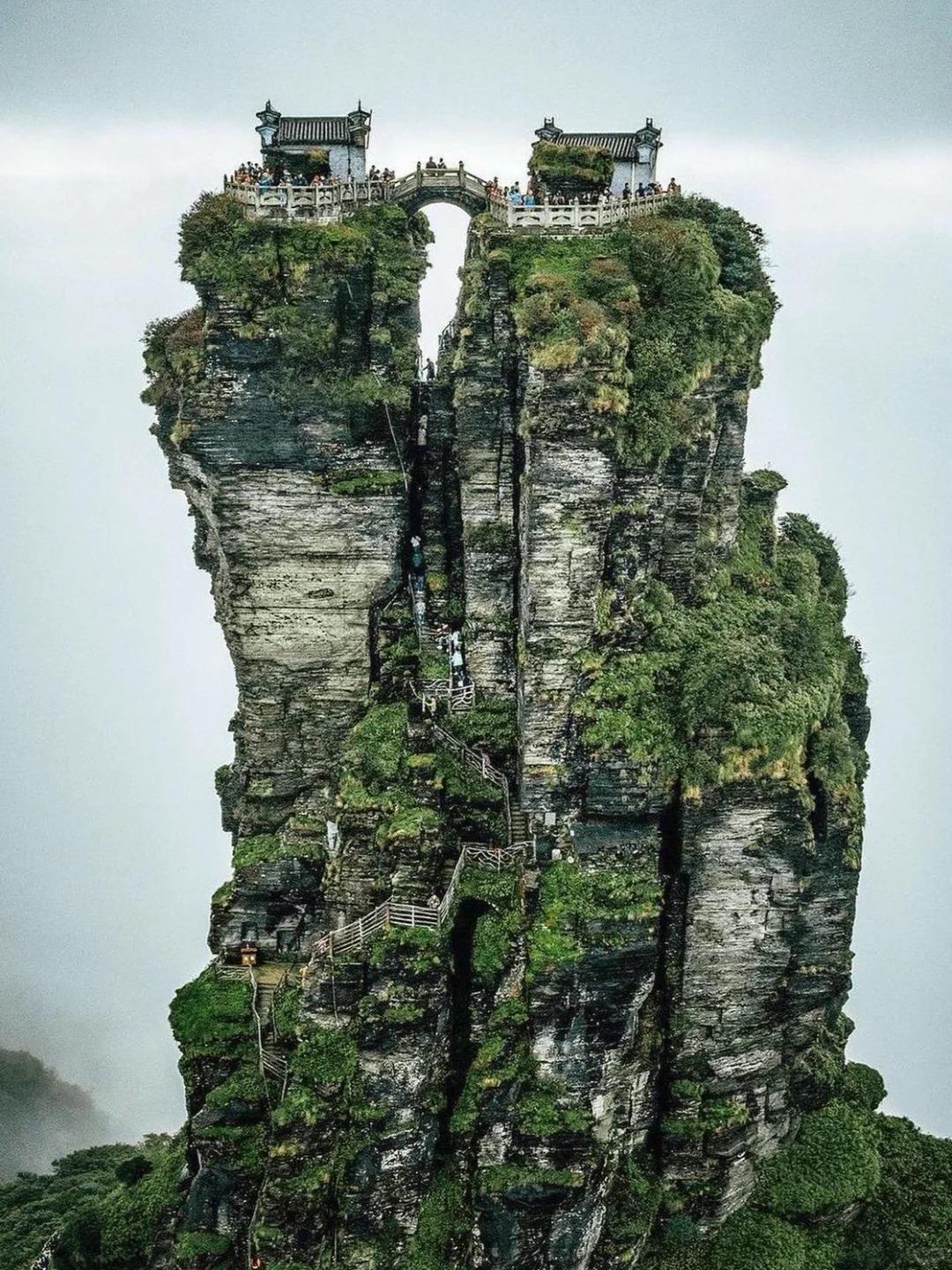
Key Attractions and Landmarks
| Attraction | Description | Significance |
|---|---|---|
| Red Clouds Golden Summit | Two rock spires connected by a bridge | Iconic symbol of Fanjingshan |
| Old Golden Summit | Ancient Buddhist temples | Important spiritual site |
| Mushroom Stone | Unusual rock formation | Natural wonder and photo opportunity |
Hiking trails wind through the mountain, offering breathtaking views and access to hidden temples and natural wonders. A modern cable car system provides easier access to the upper reaches of the mountain.
Conservation and Sustainable Tourism
Fanjingshan’s delicate ecosystem faces challenges from increasing tourism and environmental pressures. Conservation initiatives include:
- Strict visitor number controls
- Reforestation projects
- Wildlife protection programs
Visitors are encouraged to practice responsible tourism by staying on designated paths, not disturbing wildlife, and carrying out all waste.
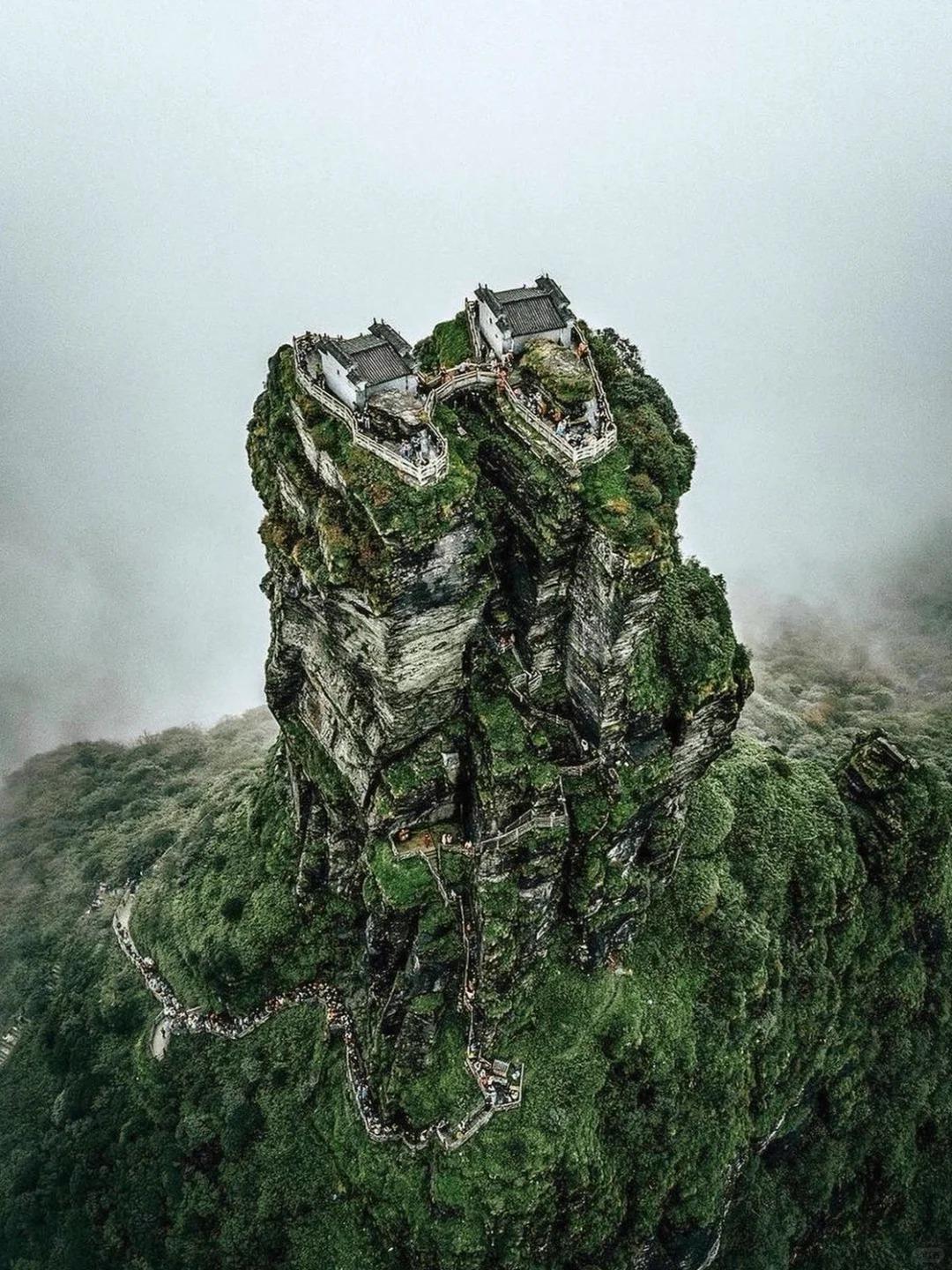
Traveler’s Guide to Fanjingshan
Best Times to Visit
- Spring (April-May): Blooming flowers and comfortable temperatures
- Autumn (September-October): Clear skies and stunning foliage colors
Getting There
- Fly to Tongren Fenghuang Airport, then take a bus or taxi to the mountain base
- High-speed trains connect major cities to Tongren, followed by a short bus ride
Accommodation
Options range from basic guesthouses at the mountain base to more comfortable hotels in nearby towns. Some temples offer simple lodging for pilgrims.
Essential Tips
- Wear sturdy hiking shoes and bring warm, waterproof clothing
- Carry water and snacks, as options on the mountain are limited
- Be prepared for sudden weather changes
- Respect local customs and environmental regulations
As you ascend Fanjingshan, each step takes you further from the mundane and closer to the sublime. The mist-shrouded peaks, alive with the whispers of ancient pines and the distant calls of snub-nosed monkeys, create an atmosphere of otherworldly beauty.
Standing on the narrow bridge between the twin spires of the Golden Lotus Peak, you might feel as if you’re suspended between heaven and earth. It’s easy to understand why Buddhist pilgrims have been drawn to this sacred mountain for centuries, seeking enlightenment amidst its towering crags and hidden temples.
Fanjingshan is more than just a destination; it’s a journey of discovery – both of the natural world and of oneself. Whether you’re marveling at the impossibly balanced Mushroom Stone, meditating in a secluded temple, or simply breathing in the pure mountain air, Fanjingshan offers a rare opportunity to connect with nature’s grandeur and the depths of human spirituality.






